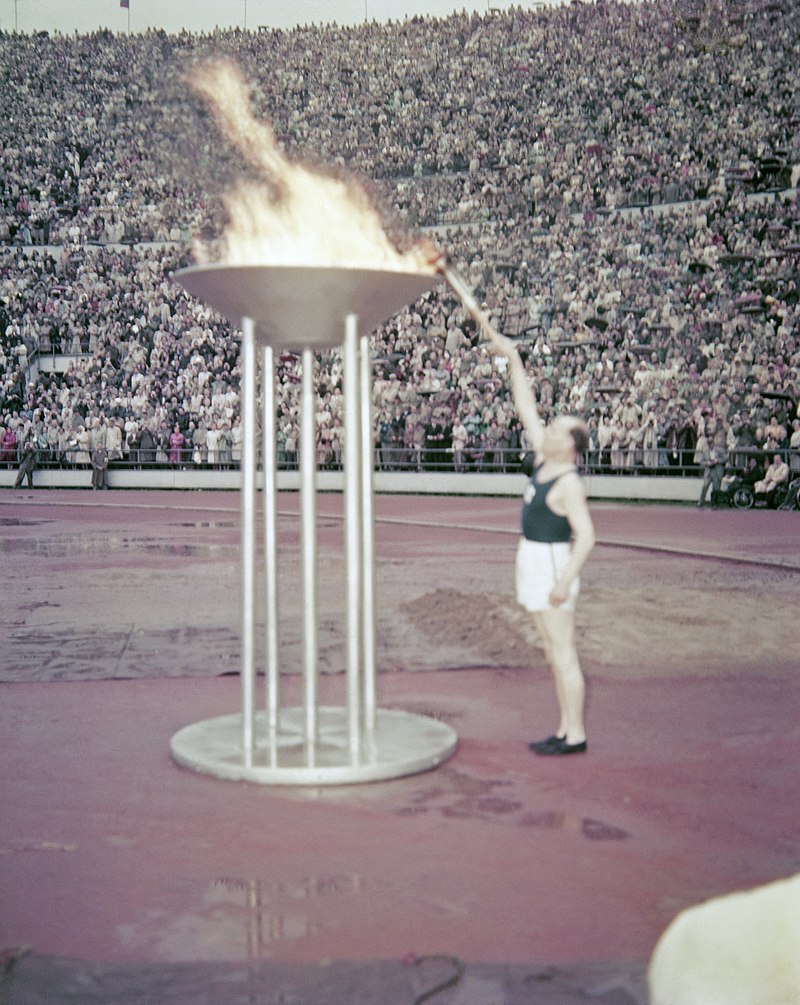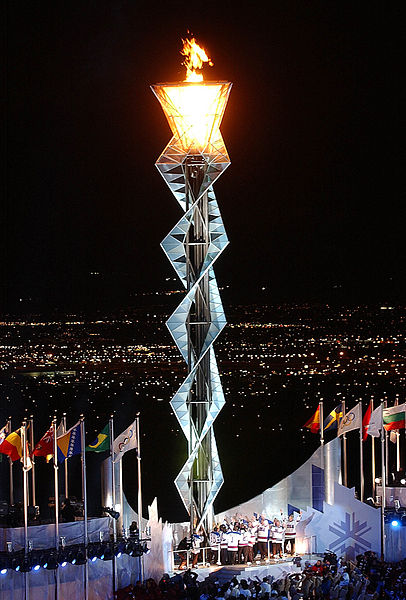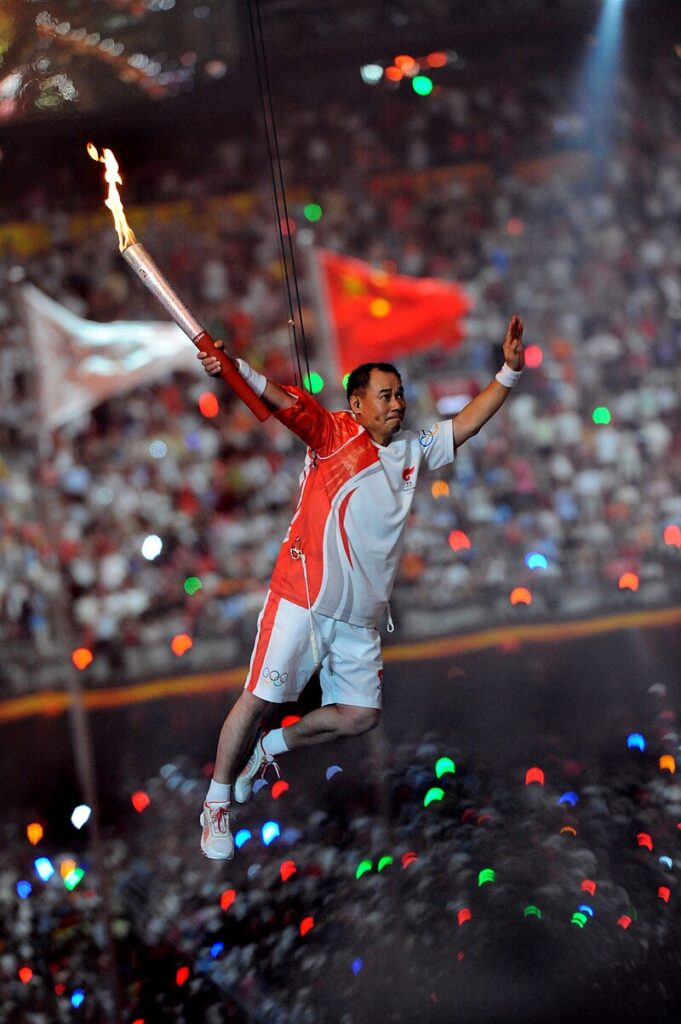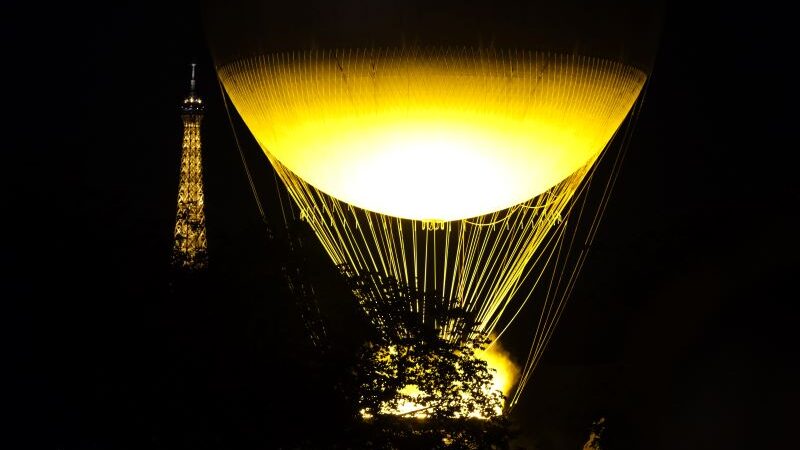Article by Dale Grant – Marketing Coordinator
From Jesse Owens’ historic victories in Berlin to the awe-inspiring performances of Simone Biles and Michael Phelps, the U.S. Olympic moments have left an indelible mark on sports history. The Olympic Flame, a symbol of competition, peace, and unity, has been at the heart of these memorable moments. For fire protection professionals, the story of the Olympic Flame offers a fascinating glimpse into the evolution of flame management and design. From its ancient Greek origins to the elaborate cauldrons used in modern Games, the flame’s journey reflects a blend of tradition and innovation.

The Origin and Journey of the Olympic Flame
The tradition of the Olympic Flame dates back to Ancient Greece, where it was used in religious ceremonies to honor the goddess Hestia. The flame was kept burning in the sanctuary of Olympia, symbolizing the eternal presence of the gods. This ancient practice was revived with the 1928 Amsterdam Olympics, reintroducing the flame as a powerful symbol of the Games’ enduring spirit.
Today, the journey of the Olympic Flame begins with its lighting in Olympia, Greece, using the sun’s rays. From there, it embarks on a global torch relay, traveling through the hands of thousands of torchbearers. This relay is not merely a logistical challenge but a profound symbol of peace and unity. Each torchbearer—whether a celebrity, athlete, or everyday hero—adds a unique chapter to the flame’s journey, connecting diverse cultures and celebrating the shared values of the Olympic Games.
The Evolution of the Olympic Cauldron
The Olympic Cauldron, where the flame is displayed during the Games, has seen remarkable evolution over the years. Early cauldrons were simple and functional, but modern designs integrate advanced technology and artistic flair. For instance, the 2012 London Olympics featured a striking design of interconnected petals, while the 2016 Rio de Janeiro Games showcased a minimalist, elegant approach.
This year, at the 2024 Paris Olympics, the cauldron takes innovation to new heights—literally. For the first time, the cauldron rises around 200 feet in the air, creating a breathtaking “ring of fire” illusion. This effect is achieved using a balloon and is made up of mist and beams of light rather than actual flames. Designed by Mathieu Lehanneur, the cauldron reflects France’s rich history with flight, inspired by early balloon flights in Paris. This eco-friendly design not only minimizes environmental impact but also aligns with the Games’ goal to halve their carbon footprint compared to previous Olympics.

U.S. Hosted Olympics: A Peek Inside the Cauldrons
1932 Los Angeles: The inaugural U.S. Olympic cauldron, introduced during the Great Depression, was a relatively modest affair compared to later designs. Its simplicity reflected the economic climate of the time but laid the groundwork for future innovations. The torch design was influenced by the Art Deco style that was popular in the 1930s, featuring sleek lines and geometric patterns that captured the era’s aesthetic. Despite its understated appearance, this cauldron marked the beginning of a tradition of creativity in Olympic flame management.
1984 Los Angeles: The 1984 Olympics saw a significant leap in cauldron design with a striking, innovative approach. The cauldron, created by designer John D. M. E. Williams, featured a towering, sculptural element that rose dramatically above the stadium, creating a memorable and visually impactful centerpiece for the opening ceremony. This design was a bold statement of modernity and optimism, reflecting the spirit of the 1980s. The torch was equally memorable, with its sleek, contemporary design symbolizing progress and hope.
1996 Atlanta: The cauldron for the 1996 Atlanta Olympics was a dramatic and artistic interpretation of the Olympic flame. Designed to resemble a giant torch, it featured a unique flame-like structure that illuminated the night sky with an impressive visual effect. This design not only celebrated the Games’ theme but also showcased the creative potential of Olympic cauldron design. The torch relay for these Games was particularly noteworthy for its extensive use of celebrities and historic figures as torchbearers, adding a touch of star power and historical significance to the relay.
2002 Salt Lake City: For the Winter Olympics, the cauldron in Salt Lake City was designed to reflect the snowy and mountainous environment of Utah. Created by architect Edward M. E. Williams, the cauldron featured a sleek, futuristic design that captured the essence of the Winter Games. Its innovative use of cutting-edge technology and materials made it one of the most memorable cauldrons in Winter Olympic history. The design not only paid homage to the local landscape but also embraced the technological advancements of the early 2000s, making it a standout feature of the Salt Lake City Games.

Flame Facts and Statistics
- Longest Distance Traveled: The torch relay for the 2004 Athens Olympics covered a staggering 78,000 kilometers (48,000 miles), making it one of the longest relays in history.
- Temperature Extremes: The flame has endured temperatures as low as -40°C (-40°F) in Winter Olympics and as high as 50°C (122°F) in Summer Games.
- Memorable Moments: The flame has been carried to the top of Mount Everest, through the Great Wall of China, and even into space aboard a space shuttle.
- Shortest Relay: The torch relay for the 1980 Moscow Olympics was relatively short, covering just 5,000 kilometers (3,100 miles) due to political tensions and boycotts.
- Most Torchbearers: The 2004 Athens Games had the most torchbearers, with over 3,000 individuals participating in the relay across various countries and continents.
As fire protection professionals, we have a deep respect for fire’s role in the Olympic Games. The flame represents not only a symbol of human achievement but also the powerful force that unites us. It serves as a reminder of both the potential for destruction that we strive to prevent and its ability to bring people together in a shared celebration of spirit and progress. This duality underscores the importance of safety and innovation in managing fire while honoring its role in symbolizing unity and connection.

